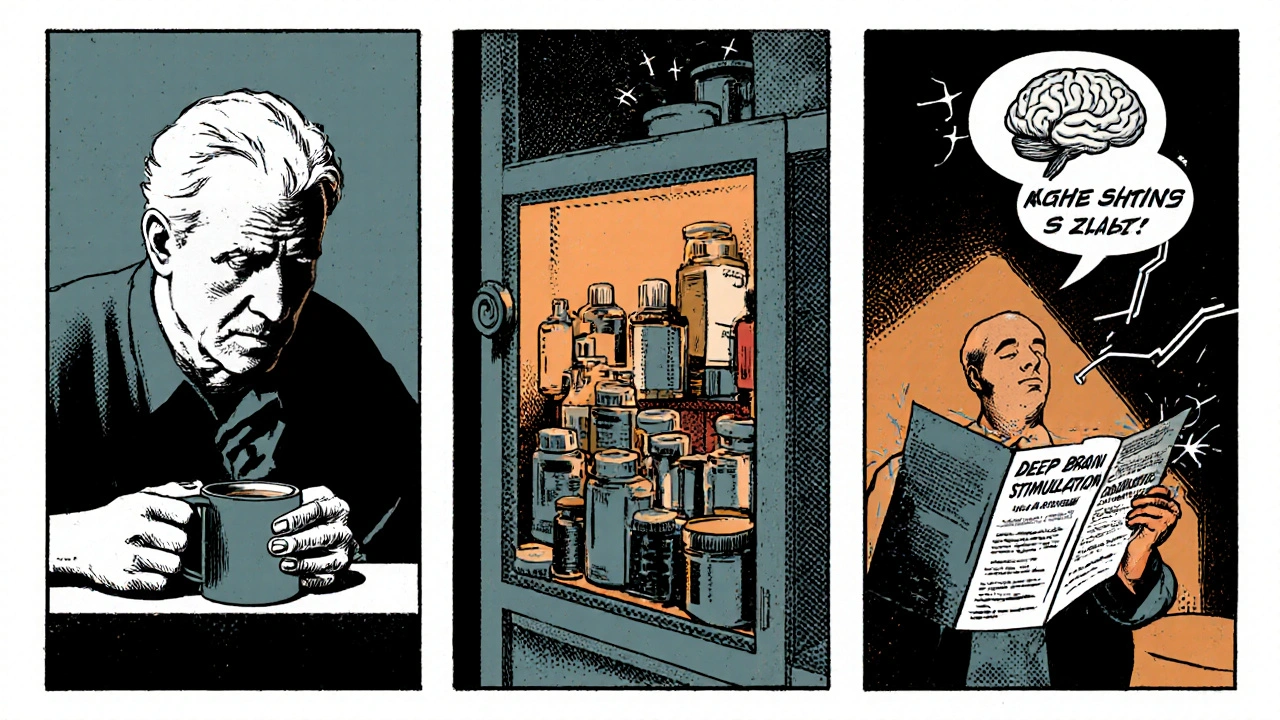Deep Brain Stimulation – Overview & Resources
When working with Deep Brain Stimulation, a surgical technique that places tiny electrodes in targeted brain regions to deliver controlled electrical pulses. Also known as DBS, it modulates abnormal neural circuits and can relieve symptoms that medicines alone don’t control. Deep Brain Stimulation is most often linked to Parkinson's disease, where it helps reduce tremor, stiffness and medication‑related fluctuations. It’s equally effective for essential tremor, a condition that causes rhythmic shaking of the hands or head when other treatments fail. Another growing use is for obsessive‑compulsive disorder, where DBS can calm intrusive thoughts that resist therapy. In all cases the therapy requires precise targeting of brain nuclei, careful programming after surgery, and ongoing monitoring to balance benefits against possible side effects.
How the Procedure Works and Who Can Benefit
The DBS process starts with a thorough assessment: neurologists confirm the diagnosis, evaluate medication response, and run imaging studies to map the target area—commonly the subthalamic nucleus for Parkinson's or the ventral intermediate nucleus for essential tremor. Surgeons then implant thin leads through a small skull opening; the leads connect to a pulse‑generator implanted under the collarbone. After the hardware is in place, a clinician programs the device, tweaking amplitude, frequency and pulse width until optimal symptom control is reached. This programming stage is crucial because the same electrical parameters that ease tremor can, if too high, cause speech problems or balance issues. Patient selection matters: candidates usually have motor symptoms that remain disabling despite optimal medication, and they must be healthy enough for a short, minimally invasive surgery. Risks include infection, lead migration, or temporary confusion, but most studies show a high success rate—up to 70‑80% of patients experience marked improvement.
Beyond the core medical facts, many practical questions arise: how does DBS interact with other drugs? What lifestyle adjustments are needed after implantation? Can diet influence the device’s effectiveness? Our collection of articles tackles these angles head‑on. You’ll find a guide on safe online purchasing of generic medications often prescribed alongside DBS, a look at how hormonal changes can affect anxiety in patients using the system, and even tips on managing side effects like miosis that sometimes appear after stimulation. Whether you’re a patient, caregiver, or clinician, the posts below give actionable advice, real‑world dosing tables, and clarity on the newest neurostimulation supplements that may complement DBS therapy. Read on to explore the full range of insights that help you make the most of this life‑changing technology.

Deep Brain Stimulation for Parkinson’s Disease: What You Need to Know
Explore how Deep Brain Stimulation works, who qualifies, the surgical steps, benefits, risks, and how it compares to medication for Parkinson's disease.
Read More